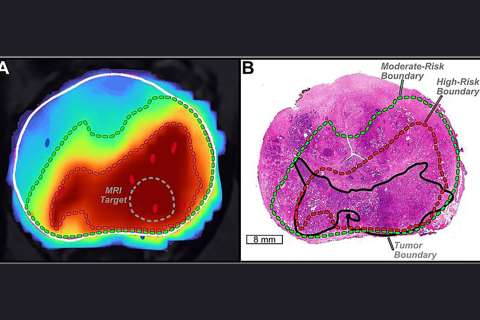What if there was a free, portable tool proven to boost mental clarity, reduce pain, improve emotional regulation and make cancer treatments easier to withstand?
What if it was available around the clock to people of all ages, and so powerful that thousands of scientific studies confirmed its efficacy?
This miraculous tool does exist, and it’s called mindfulness – the practice of intentionally paying attention to present-moment thoughts, emotions and sensations without judgement.
Shiori Lange, LCSW, who learned mindfulness as a child from her grandmother, discussed the many benefits of the ancient practice at a recent webinar, “Mindfulness for Cancer Care,” presented by the Simms/Mann UCLA Center for Integrative Oncology.
The Simms/Mann Center hosts educational webinars monthly and is creating a digital library where they can be accessed on demand.
The benefits of mindfulness are manifold. Lange outlined the positive results of regular mindfulness practice for mind, body and spirit.
Mental benefits of mindfulness include:
- Enhanced concentration and improved focus
- Reduced stress and increased cognitive flexibility
- Increased open-mindedness
- Regular practice can lead to increased gray-matter density in the brain, in areas related to learning, memory and emotional regulation.
Physical benefits of mindfulness include:
- Decreased inflammation
- Improved sleep quality
- Reduced pain perception and improved pain tolerance
Spirit benefits of mindfulness include:
- Reduced symptoms of anxiety and depression
- Increased compassion and empathy
- Improved self-esteem and vitality
- Enhanced emotional regulation and self-control
Benefits of mindfulness for people with cancer
Lange cited several studies detailing benefits of mindfulness specifically for people with cancer. The Simms/Mann Center provides psychosocial support – including spiritual care, nutritional support, counseling, art therapy and mindfulness – free to UCLA Health oncology patients and their families.
Mindfulness practice has been found to reduce insomnia, which Lange said is common among people undergoing cancer treatment. Mindfulness-based interventions also were shown to reduce stress, depression and anxiety among breast cancer patients. A review study found mindfulness decreased pain severity, reduced psychological distress and improved quality of life in people with various types of cancer.
Mindfulness practices can help alleviate common chemotherapy symptoms, such as nausea, pain and fatigue, Lange said. Mindful breathing can reduce anxiety and fear associated with radiation therapy, she said. Mindfulness also reduces stress and supports emotional well-being ahead of medical appointments and procedures, reduces pre-surgery anxiety and supports better recovery outcomes after surgery.
Lange works exclusively with people with cancer and their families. Her patients report that mindfulness meditation helps them manage pain and reduces their anxiety about disease progression, she said. Regular mindfulness practice provides mental clarity that makes it easier to manage multiple medical appointments and treatment protocols, she said, and the calmness the practice offers helps improve patients’ decision making.
Mindfulness “creates an empty space in your brain so you have extra room to process and reduce mistakes by creating flexibility in the mind,” Lange said.
What are mindful practices?
Any activity can be done with mindful awareness by paying attention to present-moment experiences without judgement. Perhaps the most popular mindfulness activities are movement practices, such as yoga or tai chi, and mindful meditation focusing on the breath as it moves in and out of the body.
Other mindfulness practices include journaling: writing down thoughts, feelings and experiences with full attention to the present moment. Mindful walking involves taking slow, deliberate steps while being aware of sensations in the feet, legs and body. People might say “placing, shifting, lifting” as they notice the changing sensations of each step, Lange said.
Scanning the body from head to toe and noticing pleasant, unpleasant or neutral sensations is another mindfulness practice, as is loving-kindness meditation, which involves silently repeating phrases in the mind wishing happiness, well-being, safety and ease for others and for ourselves.
Listening to a guided meditation may be most helpful for beginners, Lange said.
We can practice mindfulness in daily life by bringing awareness to everyday activities such as showering – noticing the sensation of the water hitting your skin and the smell of the soap – and tooth-brushing.
“It's such an automatic thing that we do every day,” Lange said,” but you may be able to slow it down and feel the sensation, how exactly your hand knows where to move your toothbrush.”
She also suggested taking a mindful breath before leaving the house and before starting to drive.
Patients have reported feeling very emotional after doctor’s appointments, Lange said, so she encourages them to sit and breathe for a few minutes before they start driving.
“Mindfulness becomes a helpful tool that patients can carry with them anywhere, whether at home or a doctor's office or at the hospital or even in traffic,” Lange said. “They can use mindfulness techniques anywhere to stay grounded and centered. And mindfulness fosters self-compassion, helping patients to be kinder to themselves and others.”





